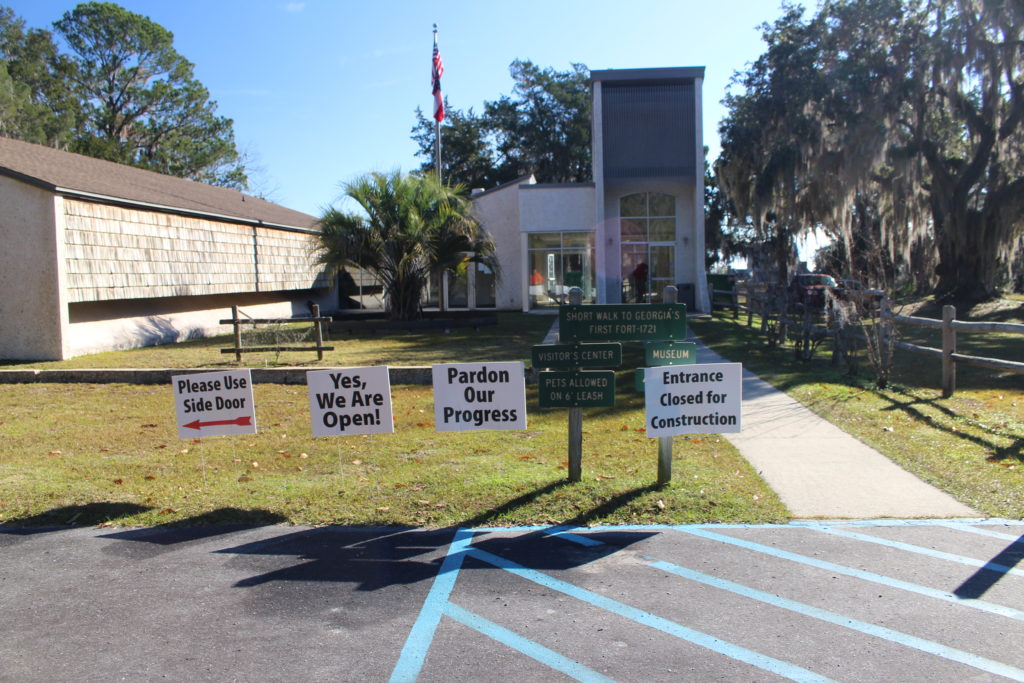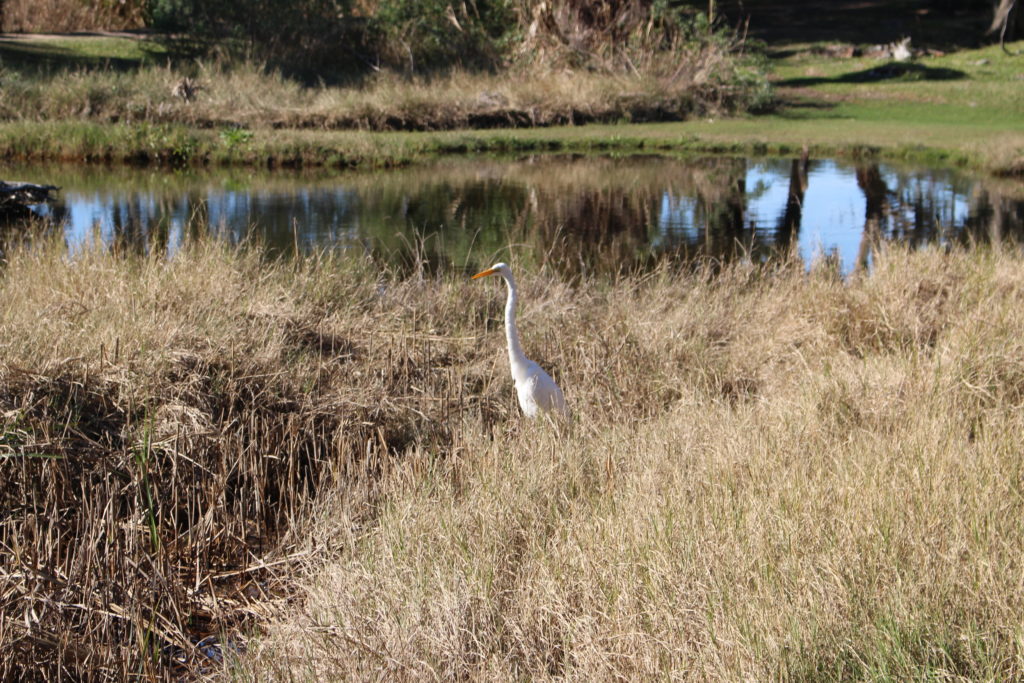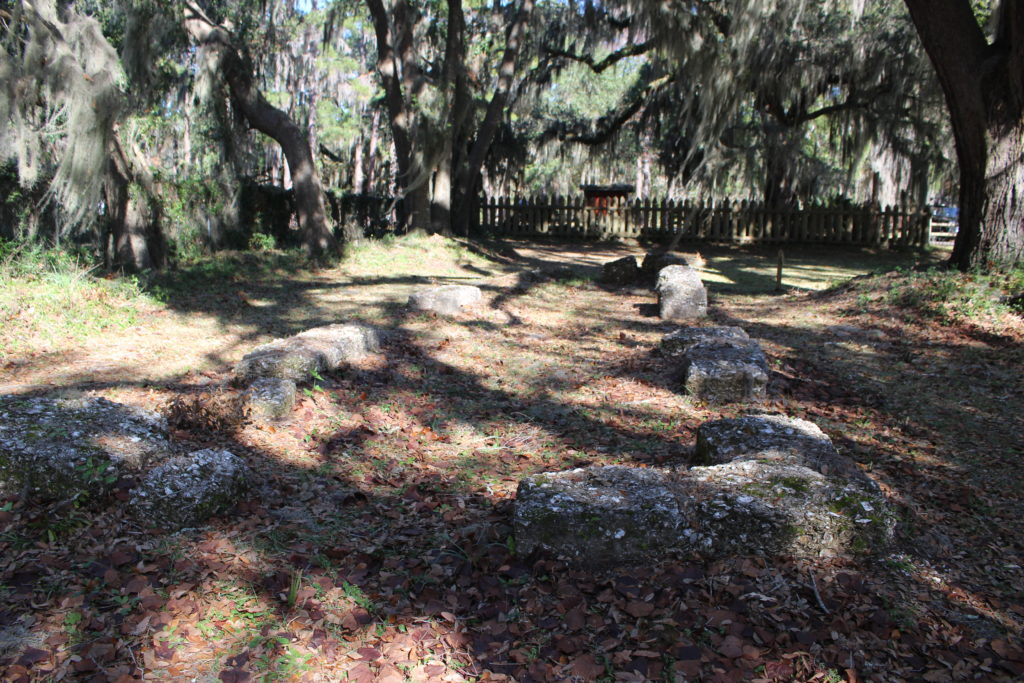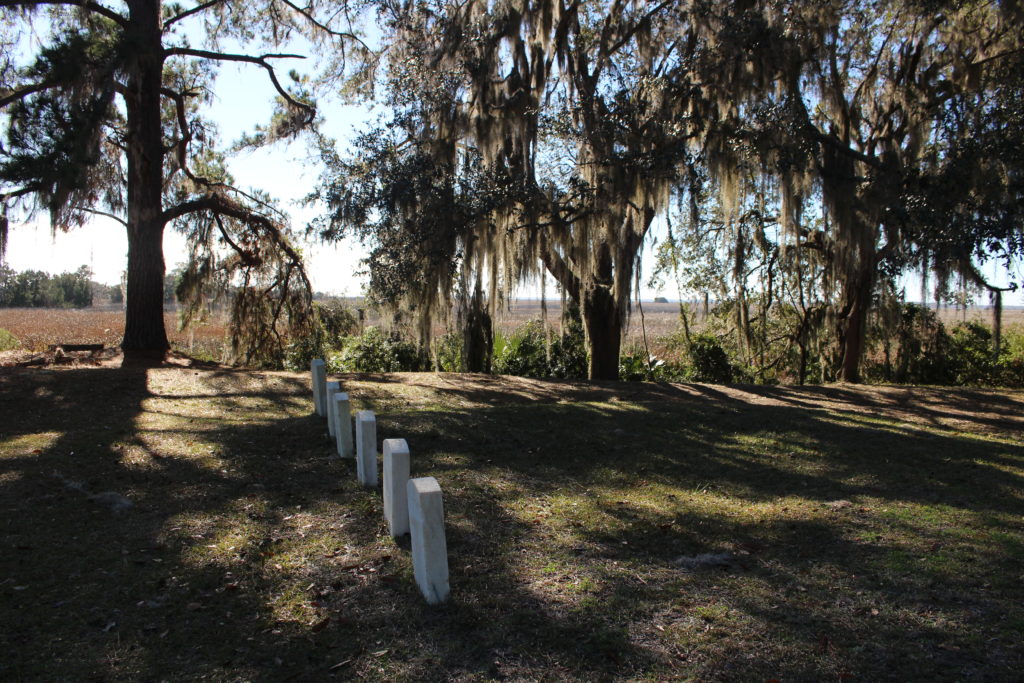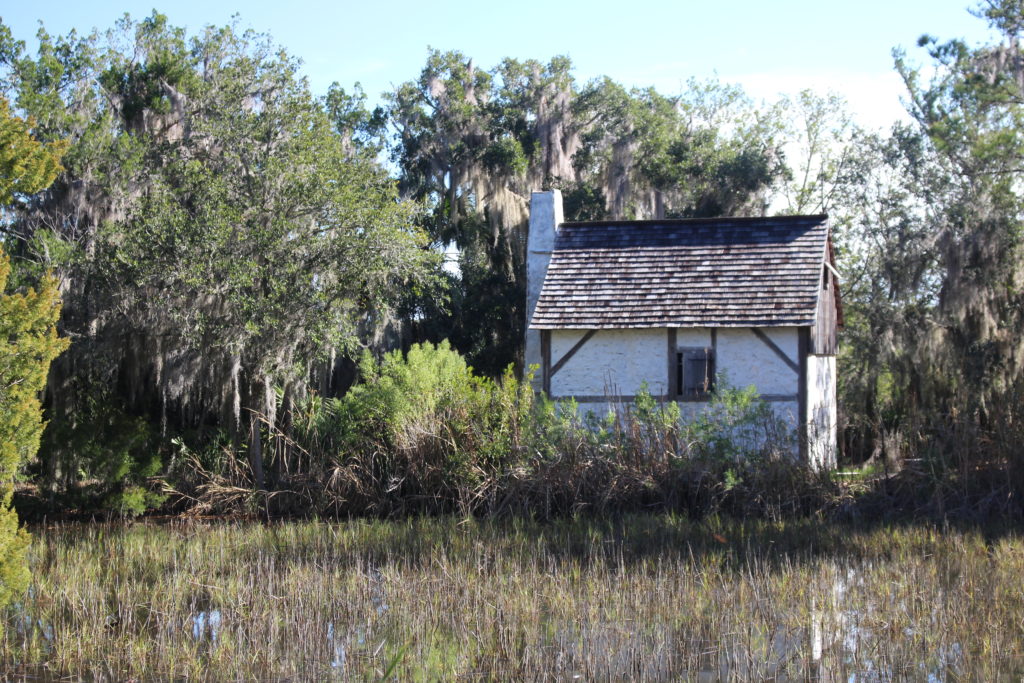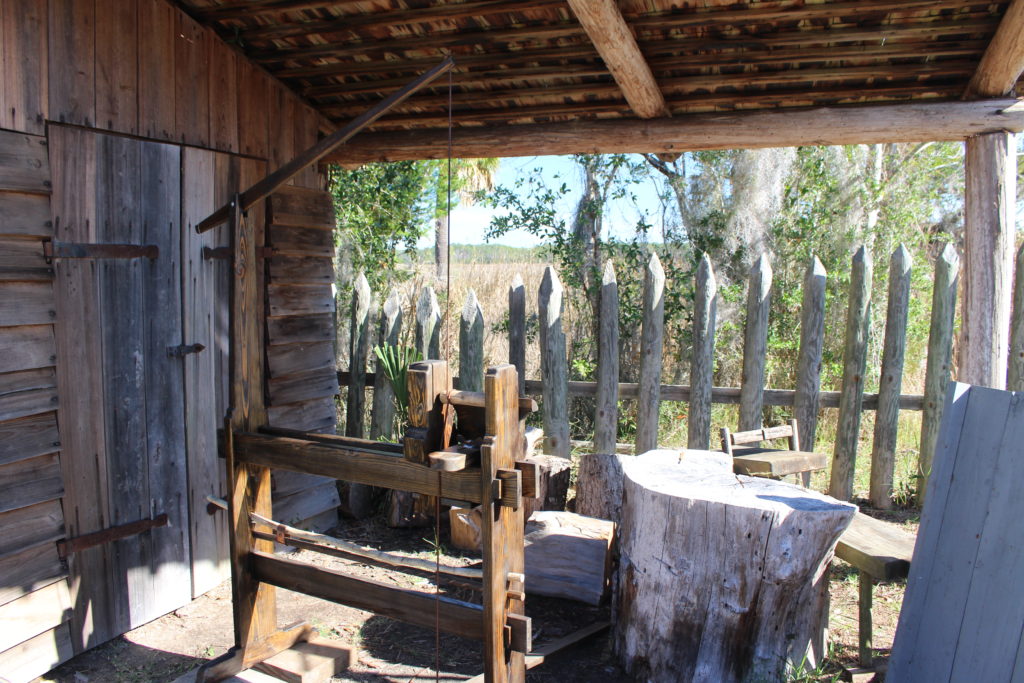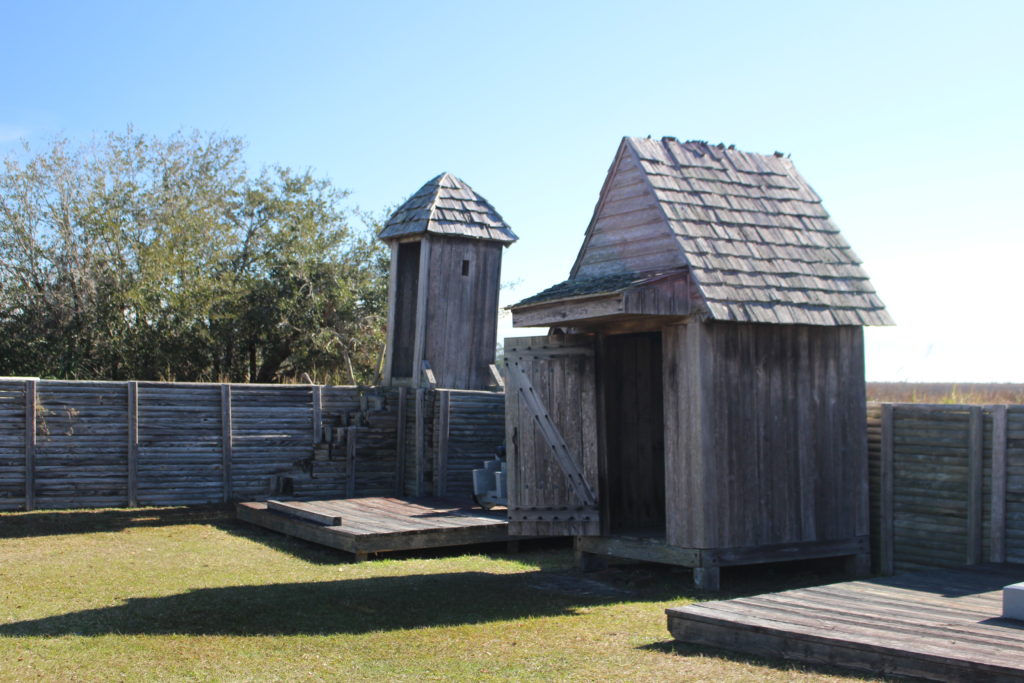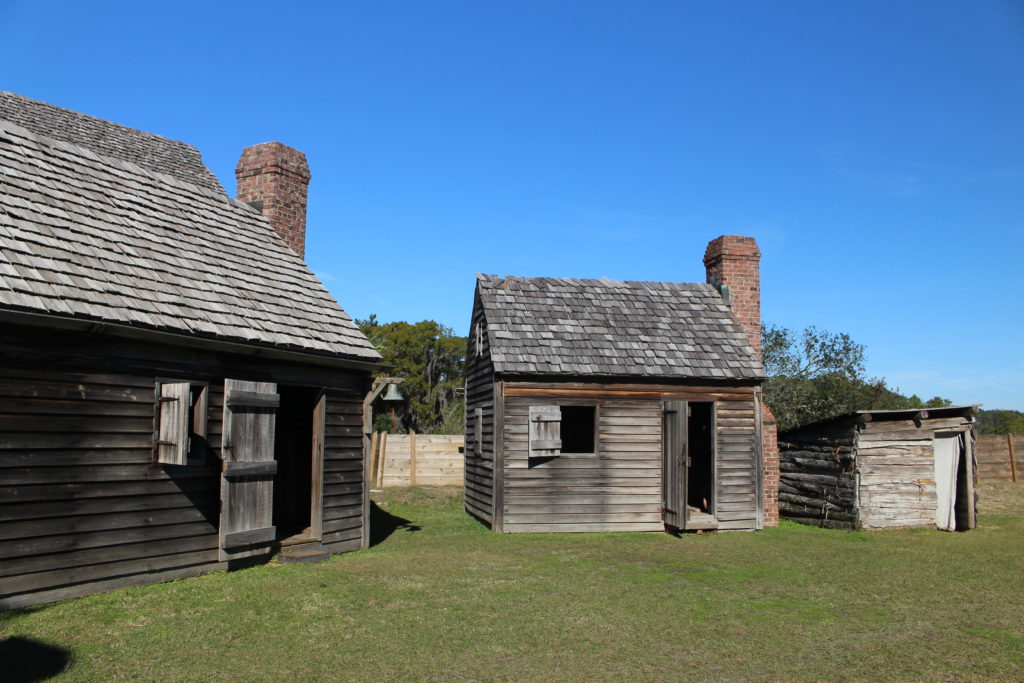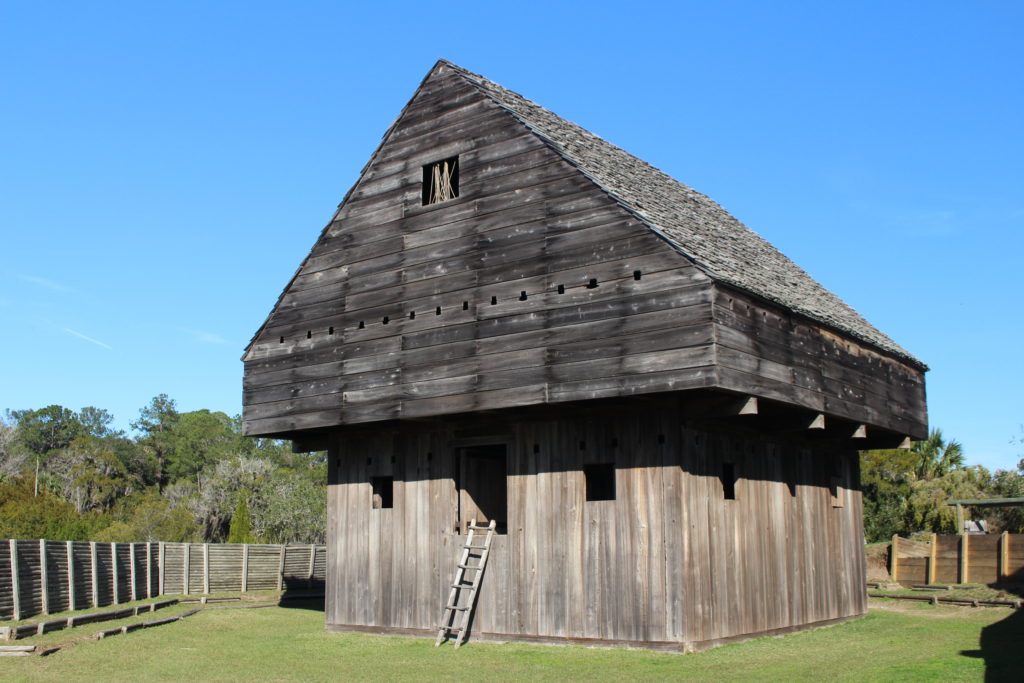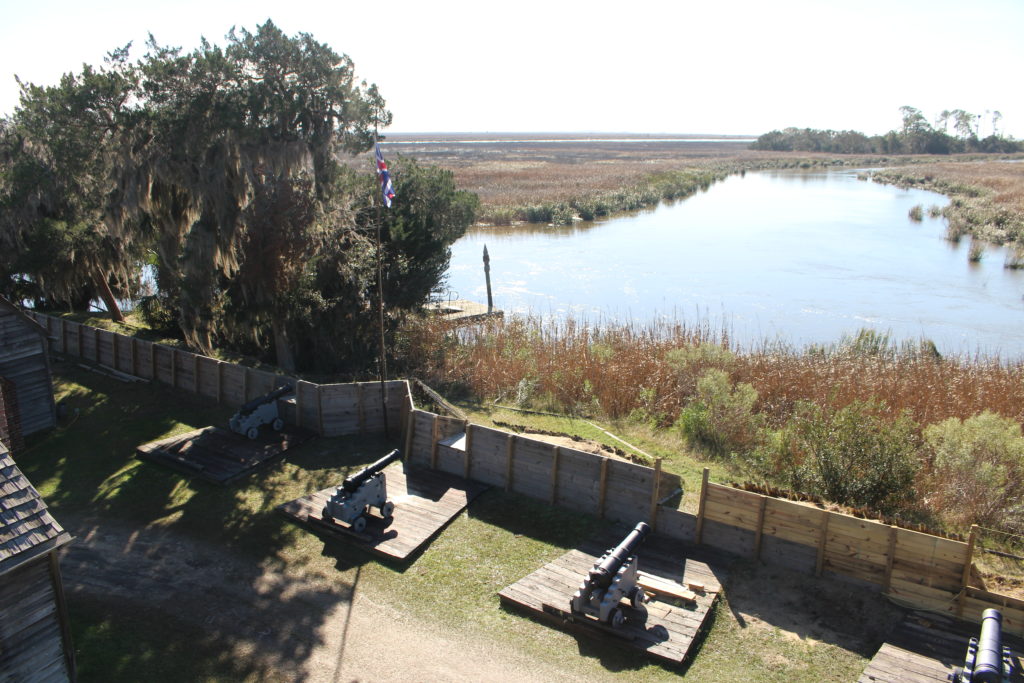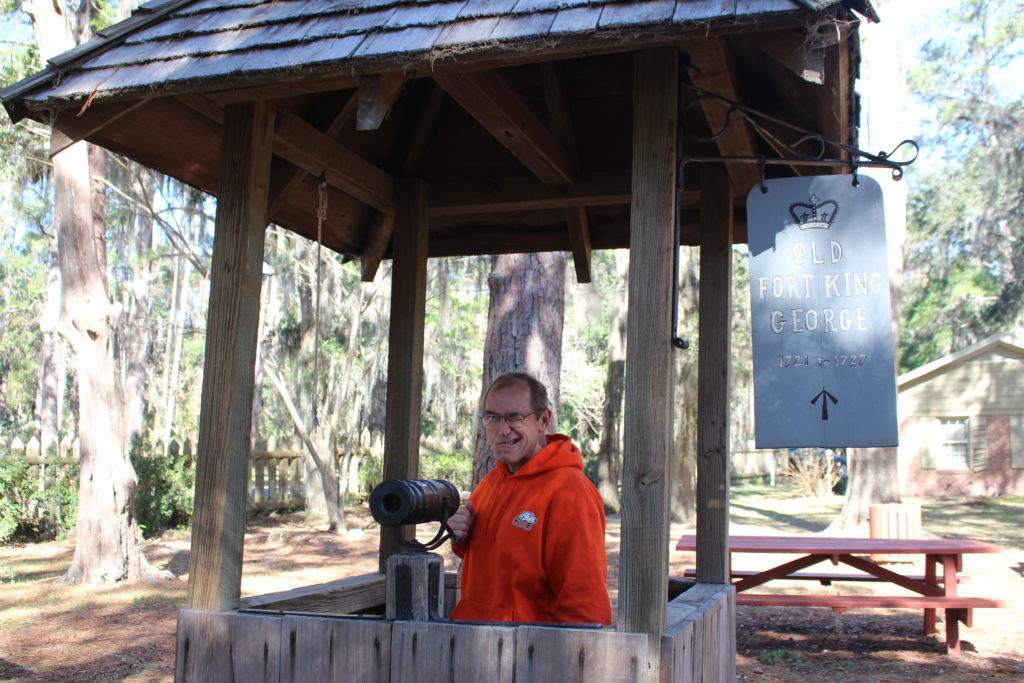On our day off this week, Tom and I drove about 30 miles north to Darien, Georgia to visit Fort King George. We had been hearing from the rangers here at Fort Frederica that Fort King George does all kinds of living history, so we wanted to check it out.
Fort King George predates Fort Frederica on the Georgia coast. But, instead of being established as part of the colony of Georgia, Fort King George was set up to defend the southern border of South Carolina. So even though it claims to be “the oldest English fort on Georgia’s coast,” I consider it to be a South Carolina fort.
A group of scouts and slaves built Fort King George in 1721. Soldiers at the fort died of disease, malnutrition, and boredom. In-fighting and excessive drinking as a result of the boredom were common. The fort burned and was abandoned in 1727. The soldiers garrisoned there never participated in a single battle.
Today Fort King George is rebuilt and interpreted as a Georgia State Historic Site. A moat once again surrounds the palisade fence and earthworks. A blockhouse stands at the center of the fort. Soldiers would have used this as their primary defensive structure. It is three stories high and provides a great view of the Altamaha delta and salt marshes.
We walked through Officers’ Barracks, the Guardhouse, and the Soldiers’ Barracks. No one was doing any living history – most of that is on the weekends – but we were able to see a blacksmith’s shop, the baking and brewing house, sentry boxes, and a four-seater privy. Two men were busy building a new bake oven.
In the early 1800’s, a lumber mill replaced the fort. There were several tidal ponds dug to power the sawmill. There were also lots of signs warning about alligators. I told Tom it was disappointing not to see an alligator when there were so many warning signs. We walked the half-mile nature trail past a wattle-and-daub hut. We walked around the burial ground for the soldiers and saw the remains of a Spanish mission.
We enjoyed our morning at Fort King George. Visiting there was a nice contrast to Fort Frederica National Monument and gave us some ideas for future programs. It cost $7.50 each to visit the site, but it was definitely worth the money.

